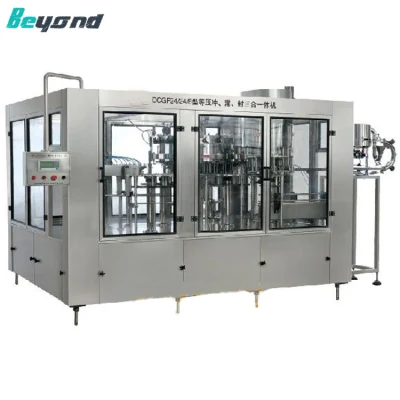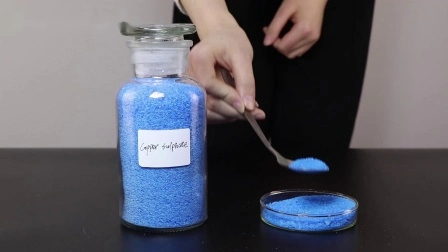
Top Quality Food Additive Citric Acid Monohydrate Qingdao Lambert
Basic Info
| Model NO. | Monohydrate |
| CAS No. | 5949-29-1 |
| Formula | C6h10o8 |
| EINECS | 200-662-2 |
| Nutritional Value | Nutritional |
| Certification | BRC, ISO, FDA, HACCP |
| Packaging Material | Paper |
| Storage Method | Normal |
| Shelf Life | >12 Months |
| Type | Citric Acid |
| Transport Package | 25kg Kraft Bag |
| Specification | Bp98/Usp24 |
| Trademark | ENGSIGN, RZBC, TTCA |
| Origin | China |
| HS Code | 291814 |
| Production Capacity | 150000 |
Product Description
Citric Acid Monohydrate / Citric Acid AnhydrousCitric acid is one of the most common food preservatives and flavoring additives. It can be found naturally in citrus fruits but is also manufactured. Its name is derived from the fact that it's an organic acid found in many fruits and vegetables, especially citrus fruits. Citric acid is a concentrated powder that is prized for its sour flavor, preservative quality, and ability to act as a pH buffer. For these reasons, citric acid is found on the ingredients list of many foods in your kitchen pantry, including preserves, candy, and crunchy snacks. It is also known as "sour salt" due to its flavor and similar appearance and texture to salt.
Citric Acid Properties:
At room temperature, citric acid is a white crystalline powder. It can exist either in an anhydrous (water-free) form or as a monohydrate. The anhydrous form crystallizes from hot water, whereas the monohydrate forms when citric acid is crystallized from cold water. The monohydrate can be converted to the anhydrous form by heating it above 74 c. Citric acid also dissolves in absolute (anhydrous) ethanol (76 parts of citric acid per 100 parts of ethanol) at 15 degrees celsius. In chemical structure, citric acid shares the properties of other carboxylic acids. When heated above 175 c, it decomposes through the loss of carbon dioxide and water.
Citric Acid Specification:
1. Citric Acid Monohydrate-BP98/USP24
| ITEM | SPECIFICATION | RESULT |
| Appearance | Colorless or white crystal | Colorless or white crystal |
| Identification | Complies with the limit Test | Conforms |
| Clarity&Colour of Solution | Pass test | Pass test |
| Purity | 99.5~101.0% | 99.96% |
| Moisture | 7.5~8.8% | 8.72% |
| Sulphated Ash | ≤0.05% | 0.01% |
| Sulphate | ≤150ppm | <150ppm |
| Oxalic acid | ≤100ppm | <100ppm |
| Heavy Metals | ≤5ppm | <5ppm |
| Readily Carbonisable Substance | Pass test | Pass test |
| Bacterial Endotoxin | ≤0.5IU/mg | <0.5IU/mg |
| Aluminium | ≤0.2ppm | <0.2ppm |
| Lead | ≤0.5ppm | <0.5ppm |
| Arsenic | ≤1ppm | < 1ppm |
| Merc... | ≤1ppm | < 1ppm |
| Mesh | 8-80MESH | Conforms |
| Conclusion: IN CONFORMITY WITH BP/USP/FCC/E330 | ||
2. Citric Acid Anhydrous-BP98/USP24
| ITEM | SPECIFICATION | RESULT |
| Appearance | Colorless or white crystal | Colorless or white crystal |
| Identification | Complies with the limit Test | Conforms |
| Clarity&Colour of Solution | Pass test | Pass test |
| Purity | 99.5~101.0% | 99.94% |
| Moisture | < 1.0% | 0.14% |
| Sulphated Ash | ≤0.05% | 0.01% |
| Sulphate | ≤150ppm | <150ppm |
| Oxalic acid | ≤100ppm | <100ppm |
| Heavy Metals | ≤5ppm | <5ppm |
| Readily Carbonisable Substance | Pass test | Pass test |
| Bacterial Endotoxin | <0.5IU/mg | <0.5IU/mg |
| Aluminium | ≤0.2ppm | <0.2ppm |
| Lead | ≤0.5ppm | <0.5ppm |
| Arsenic | ≤1ppm | < 1ppm |
| Merc... | ≤1ppm | < 1ppm |
| Mesh | 30-100MESH | Conforms |
| Conclusion: IN CONFORMITY WITH BP/USP/FCC/E330 | ||
Citric Acid Uses
Citric acid has many uses in food production. It is a flavor enhancer, preservative, and helps facilitate the ripening process. About 50 percent of the world's citric acid production is used as a flavor booster in beverages, and because citric acid is made in a powder form, it's added to dry foods such as seasoning salts, flavoring powders, and crunchy snacks when a sour flavor is desired.
The acidic pH of citric acid makes it useful as a food preservative and preserves the color of the food since it significantly slows the oxidation. Since many bacteria are unable to grow in an acidic environment, citric acid is often added to jams, jellies, candy, canned foods, and even meat products as a form of preservation. Citric acid is also used to facilitate the ripening process when making cheese, particularly mozzarella. It is employed to adjust the pH of solutions when brewing both beer and wine, and works to keep fats from separating in homemade ice cream; it also prevents sugar from crystallizing in caramels. A small pinch of citric acid can also enhance the leavening power of baking soda, making it an ideal secret ingredient for cakes and biscuits. Those on a low-sodium diet may sub in citric acid for salt when seasoning.
Citric Acid Storage
Store citric acid in its original container in a cool, dry place. From the date of manufacturing, it has a shelf life of three years once opened and will stay stable for at least five years unopened.
Citric Acid Nutrition and Benefits
Citric acid has zero calories and fat but also no other nutritive values. While consuming natural citric acid from fruits and vegetables has health benefits-it helps metabolize energy and may protect against kidney stones-ingesting the manufactured version hasn't been proven beneficial to our health.
Citric Acid Packing
25kg/kraft bag or as required.






